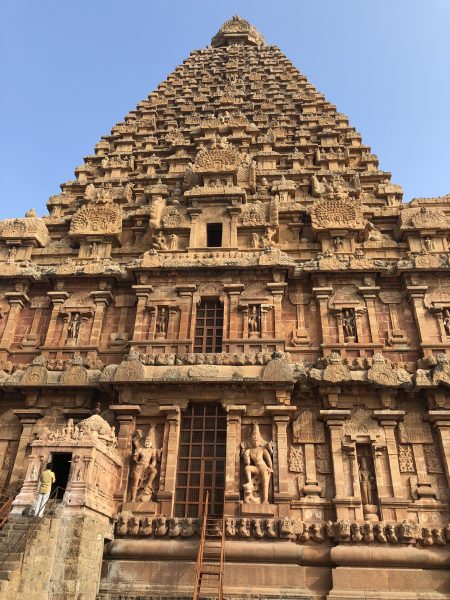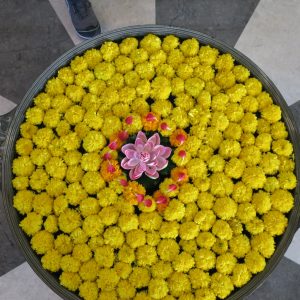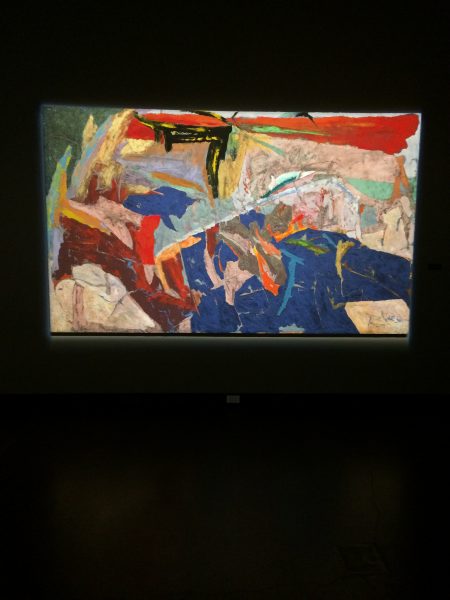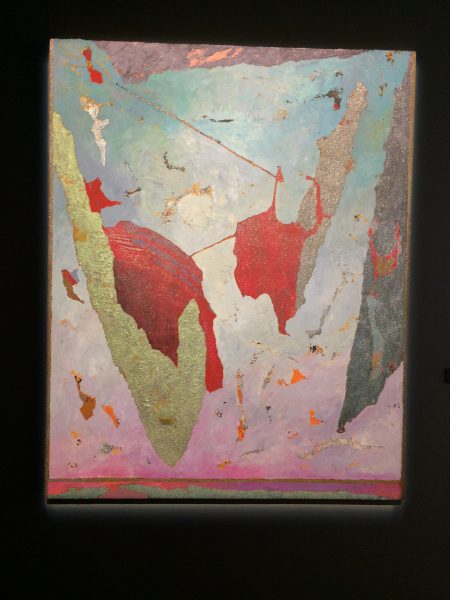India

I got a map of India so I could trace my travels, and picture the shape of it. It turned out the trail I traveled was no more than a tiny stripe running along the edge of that map— a glimpse of the hem of the handwoven thing that is India.

 I went to India to experience color. I sat beside the Indian Ocean and watched the graceful fishing boats out on the water with their bows that rose up in an attenuated arch. One was lavender, sky blue and the yellow of an egg yolk. The beach was strewn with turquoise fishing nets with red floats. Coconut palms and flowering vines lined the shore. It was summer there and it was hot.
I went to India to experience color. I sat beside the Indian Ocean and watched the graceful fishing boats out on the water with their bows that rose up in an attenuated arch. One was lavender, sky blue and the yellow of an egg yolk. The beach was strewn with turquoise fishing nets with red floats. Coconut palms and flowering vines lined the shore. It was summer there and it was hot.
I got to be a bystander at two weddings– one huge and dazzling, the long walkway down to the sea decorated with a meandering line of marigold flower heads marking both sides of the path.

The wedding party arrived, along with the guests, behind a loud and spirited group of drummers. All the guests were dressed in brilliant colors. The men wore turbans that were very tall and the color of a peach. The drumming went on for half an hour, as exuberant and overwhelming as love.

On another day, visiting an ancient temple, we observed a smaller wedding in progress in an alcove, and were invited to join in the celebration.

In early morning light we explored a group of monolithic temples carved in situ from granite. The one that most struck me was a bas relief of a life sized elephant.

The most sensitive art about animals seems to always come from the hand of a person who has a living relationship with the animal, and this bas relief was like that. The elephant was carved with restraint, the subtle planes of ear and haunch rendered with deep knowing.

On another day, we visited a temple one thousand and ten years old. It is granite and there are no quarries for 60 kilometers. The shadows were deep and long and the granite stones cool to bare feet.
Inside the part of the temple I was not allowed to visit, a statue of a god was being washed with water and a stone drainage system sluiced the water off a spout that looked like an elephant’s trunk and into a pool, then down a long narrow rectangular channel. A group of pilgrims arrived as we did, all dressed in shades of saffron. A pair of newlyweds posed for pictures. An old woman slept in the shadows on a cool stone, her mouth open to expose the wounds where her teeth had been, her garments a slash of brilliant emerald green.

Driving through the countryside, there were Untouchables living in houses built of dirt, roofs made of thatch, walls sometimes nothing more substantial than a tarp. Fences in the countryside were made of woven twigs, delicate as spiderwebs. Scaffolding on construction sites was slender saplings lashed together with twine made of coconut palm. Everywhere there was gentleness and piles of 21st century detritus. We stopped in a village to experience the temple festival. It was an Untouchables’ temple, and they were preparing animal sacrifices, plucking and cooking chickens.

Babies heads were being shaved with strait razors amidst tearful protests, their hair a sacrifice.

One little year old boy arrived at the temple in a silk litter, borne by several men. Merchants sold their wares to the festival attendees.


On bare feet I visited temple after temple– granite floors worn smooth, holding heat where the sun strikes, and cool where there was shadow. There were mandala-like experiences everywhere– round bowls of water in which flower heads were floated in symmetrical patterns, and symmetrical chalk designs drawn every morning at the doorstep of most houses.


There were strutting peacocks, and a colonial garden house with whirling overhead fans where we dined in the midst of a banana grove, with artificial rain misting all around us to cool us. There were some of the kindest people I have ever met– the most welcoming and gracious people in every day’s path-people who invited us to join them in whatever they were doing, with broad smiles. And a culture wildly expressive and visually free of restraint for me to study.

Our guide, a former Hindu priest, fluent in many languages, would stop pilgrims, bridegrooms, artisans , or families and ask them questions in their own languages, and then translate their answers for us.
I found that color I was looking for. Saturated, audacious color from the deepest recesses of the color wheel . I bought a silk scarf, handwoven by a sari maker on a big old wooden loom, and I swear it has every color ever thought of woven into it, and the silk shines like a gemstone. A friend asked me if this trip was art related. Of course it was, but the literal answer is that the relationship is not one-to-one. I don’t always absorb and then repeat what I see. I see, catalogue, and stash in my visual memory the oddest things, which emerge on some surface going forward, or inflect my take on a bit of the natural world. The tiny dots I saw on the 1540’s mural show up on the limbs of a tree I’m painting from the Blue Ridge. I find myself choosing the wilder version of fuchsia. I weave some passage like it might be a sari. It’s all there, though. Bright and shining as the sun.





Recent Comments